Product Overview
A custom Barracuda fish mount from Gray Taxidermy is handcrafted in the U.S. Combine over fifty years of experience and skilled craftsmanship will ensure that your custom trophy exceeds your expectations.
Our master artists take pride in capturing the rich beauty and realism of nature that each unique marine species bring. A fish mount from Gray Taxidermy will capture and commemorate a memory of a life time.
Great attention to detail and true craftsmanship is our motto while we continue to serve customers around the world. Gray Taxidermy goes to great lengths to ensure the precise color and characteristics are resembled in your custom Barracuda fish mount.
We are able to craft a fishmount the that represents the ultimate presentation of an angler's most notable achievement.
Product Specs:
- Available Sizes: 17 in. - 70 in.
- Details: Fired-Enamel Glass Eye
- Product Options: Wood Plaque, Custom Base, 360°
-
We also offer elegant solid wood plaques to accompany yor trophy mount. Includes traditional wood plaque with sublimated personalized information. Just ask for more information.
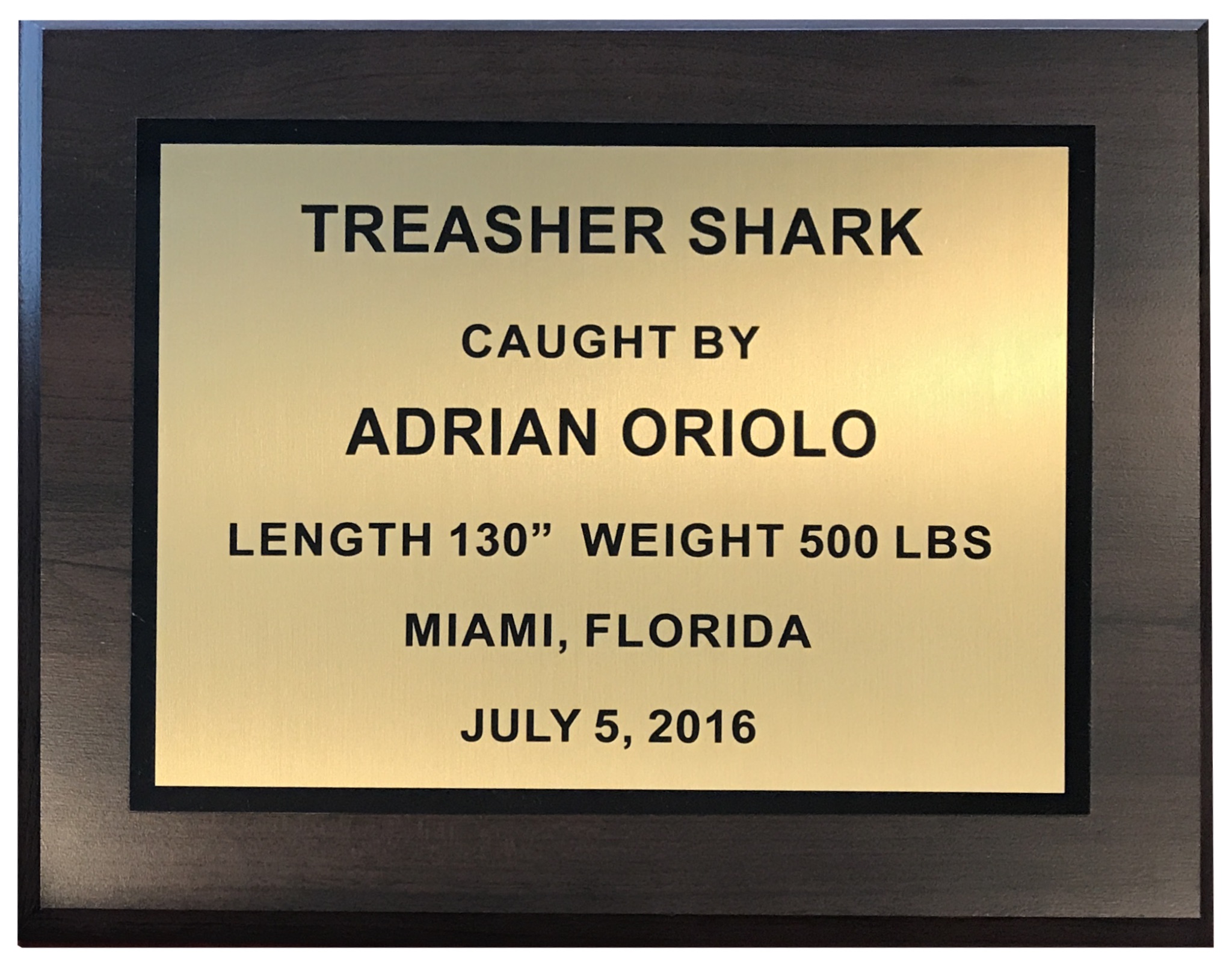
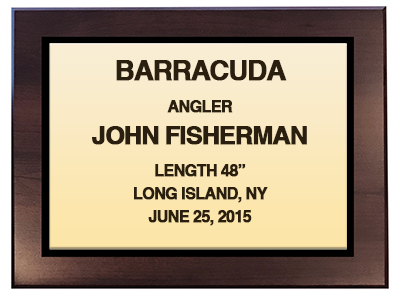 15 in x 12 in or 10 in x 8 in personalized wood plaque.
15 in x 12 in or 10 in x 8 in personalized wood plaque.
Color: Gold
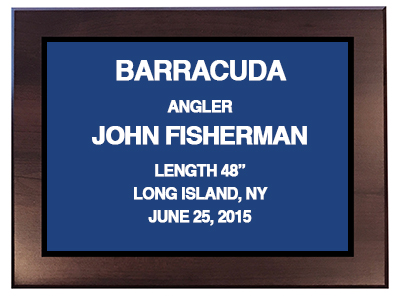 15 in x 12 in or 10 in x 8 in personalized wood plaque.
15 in x 12 in or 10 in x 8 in personalized wood plaque.
Color: BlueAvailable for all fish species
Species Information
Scientific Name: Sphyraena
Size: Great barracuda are large fish. The record for a hook and line caught great barracuda is 1.7 meters (5.5 feet), 44 kg (103 lbs) and the species is reported to attain a size of 2 meters, 50 kg. Any barracuda over 4.8 feet (1.5 m) in length can be considered very large. Based on scale analysis of large specimens, great barracuda have a lifespan of at least 14 years. Sexual maturity is reached at a length of about 23 inches (60 cm).
Description: The great barracuda has a slender, streamlined body that is round in the mid-section. The top of the head between the eyes is nearly flat and the mouth is large, containing many large sharp teeth and a projecting lower jaw. The pectoral fin tips extend to the origin of the pelvic fins. The spinous and soft dorsal fins are widely separated and the double emarginate tail fin exhibits pale tips on each lobe. Body coloration of the great barracuda is brownish or bluish gray on the dorsum and upper side, with a greenish cast shading to silvery on the sides and a white belly. The upper side may have 18-23 dark bars most often observable when the fish is resting or over a variegated substrate.
The black spots on the lower sides of the great barracuda distinguish it from other species of barracuda. The second dorsal fin, anal, and caudal fins are violet to black with whitish tips. Young barracuda exhibit pale reticulations on the dorsum and a dark stripe on either side that breaks into spots as the fish grows. These patterns are somewhat ephemeral though as juveniles can alter their color patterns to closely match that of their surroundings. These changes in coloration serve to camouflage the fish from predators as well as well as wary prey. Adults have similar coloration along with a more silvery appearance that is advantageous to a fish that swims near the surface of the water.
Habitat: Great barracuda commonly occur in nearshore coral reefs, seagrasses, and mangroves. They may also reside in the open ocean, living predominantly at or near the surface, although they are at times found at depths to 325 feet (100m). Barracudas tend to be solitary but are sometimes found in small aggregations over reefs and sandy bottoms. Juveniles mature amongst mangroves and seagrass beds, habitats that offer cover from predators. During the second year of life, barracuda move to deeper reef habitats. Juveniles and some adults have been observed in areas that receive high amounts of freshwater input, however adults generally tend to avoid areas of brackish water.

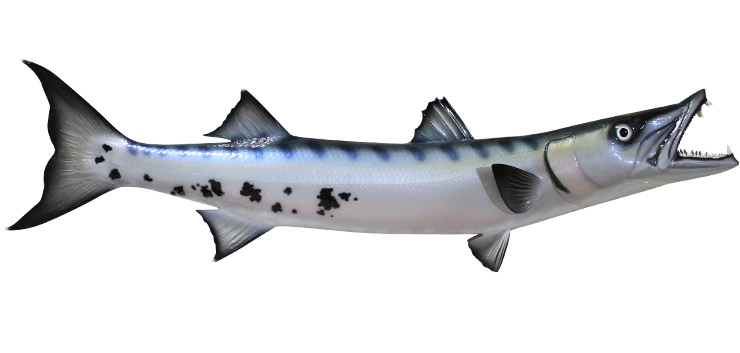
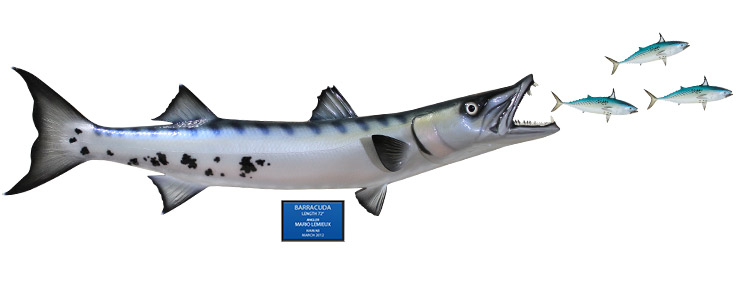
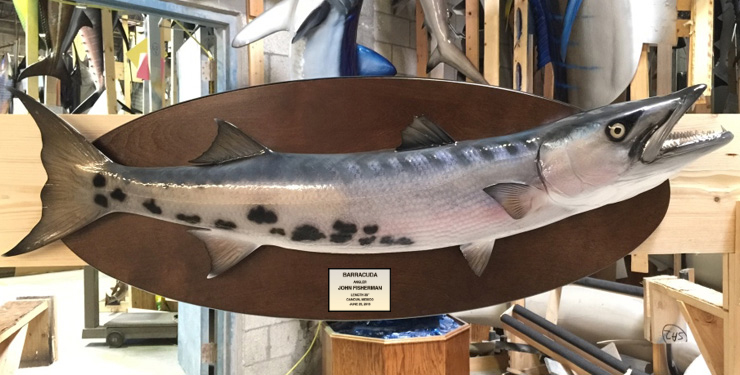
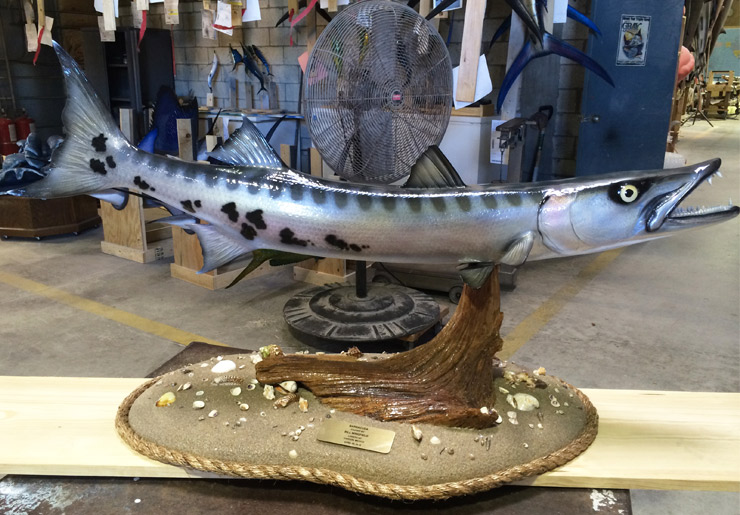
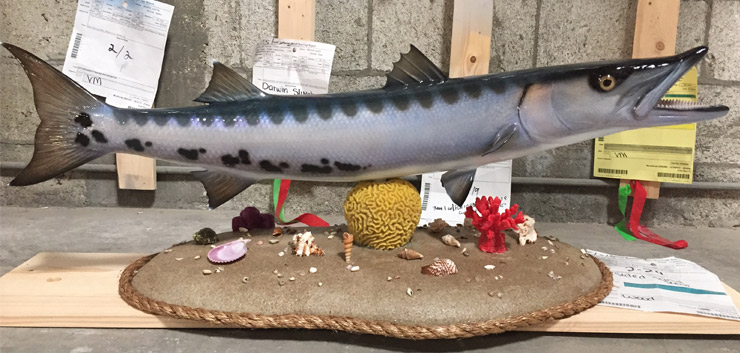

Call Now: 800.452.5501